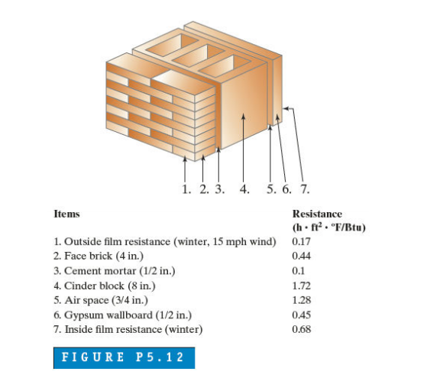A typical exterior masonry wall of a house consists of the items in the table shown in Figure P5.12. Assume an inside room temperature of 68oF, an outside air temperature of 10oF, and an exposed area of 150 ft2 . Calculate the heat loss through the wall.

The total resistance to heat flow is given by

Therefore, the heat loss is

You might also like to view...
This photograph from the 1964 Alaskan earthquake shows a white area of seafloor that was uplifted during the event. What does this observation specifically suggest about how the earthquake might cause damage?

A) Areas on land could be affected by liquefaction.
B) Areas on land could experience landslides.
C) This earthquake could have caused a tsunami because it offset the seafloor.
D) The earthquake could have caused fires because it released sulfur dioxide gas.
How does a mineral resource differ from an ore deposit?
An ore deposit occurs naturally, whereas a mineral resource does not. Ore deposits are economically extractable, whereas mineral resources are not. Mineral resources are concentrations of metals, whereas ore deposits are not. Ore deposits are concentrations of metal, whereas mineral resources do not contain metals. A mineral resource occurs naturally, whereas an ore deposit does not.
With the Soviet Union's collapse in 1991 a new era arrived in Europe and the power of ____________ emerged.
-revolution -financial services -unification -neocolonialism -NATO
Volcanic eruptions may, at least temporarily,
A. increase the rate of ozone depletion. B. decrease average global temperature. C. contribute to the formation of acid rain. D. All of the answers are correct.